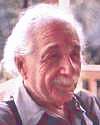 | TODAY IN SCIENCE HISTORY NEWSLETTER - 14 MARCH |
| Feature for Today |
 Today is PI day! ... from the form of the date as written 3-14 in the U.S. Today is PI day! ... from the form of the date as written 3-14 in the U.S.On 14 Mar 1879, Albert Einstein was born—one of the best-known scientists, and who needs no further introduction. No doubt you have read what others have written about him, and heard various quotations by him. But how much have you read about his theory written in his own words? Fortunately, you can remedy that by reading a description of his own theory, written for the general public, published shortly after World War I, in the Times (28 Nov 1919), entitled simply: My Theory. Therein, his concluding remark has become a familiar quotation: "By an application of the theory of relativity to the taste of readers, today in Germany I am called a German man of science, and in England I am represented as a Swiss Jew. If I come to be represented as a bête noire, the descriptions will be reversed, and I shall become a Swiss Jew for the Germans and a German man of science for the English!" |
| Book of the Day | |
| |
| Quotations for Today | |
 | "Equations are more important to me, because politics is for the present, but an equation is something for eternity." |
| "Few problems are less recognized, but more important than, the accelerating disappearance of the earth's biological resources. In pushing other species to extinction, humanity is busy sawing off the limb on which it is perched." | |
| "I've found out so much about electricity that I've reached the point where I understand nothing and can explain nothing." (Describing his experiments with the Leyden jar.) | |
| QUIZ | |
| Before you look at today's web page, see if you can answer some of these questions about the events that happened on this day. Some of the names are very familiar. Others will likely stump you. Tickle your curiosity with these questions, then check your answers on today's web page. | |
| Births | |
| | |
| Deaths | |
| | |
| Events | |
| Answers |
When you have your answers ready to all the questions above, you'll find all the information to check them, and more, on the March 14 web page of Today in Science History. Or, try this link first for just the brief answers. Fast answers for the previous newsletter for March 13: Percival Lowell; oxygen; Proxima Centauri; Henry Shrapnel; the decade include this year 1930; a planet, Uranus. |
| Feedback |
--
If you do not want to receive any more newsletters, Unsubscribe
To update your preferences and to unsubscribe visit this link









0 comments:
Post a Comment